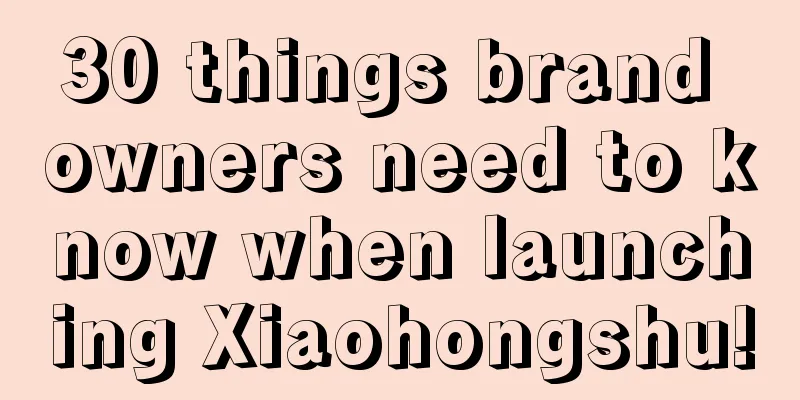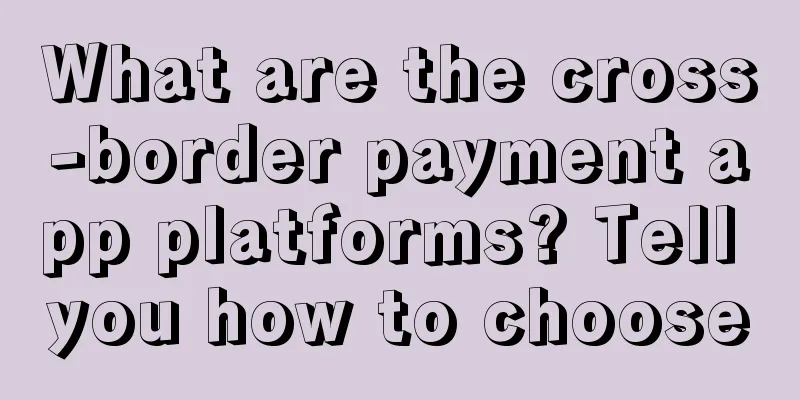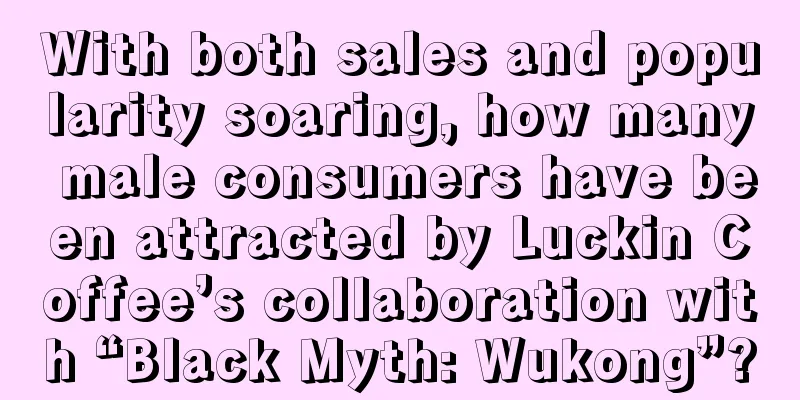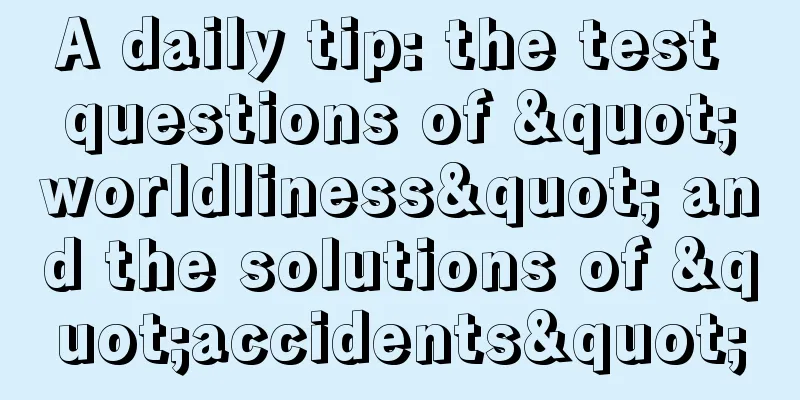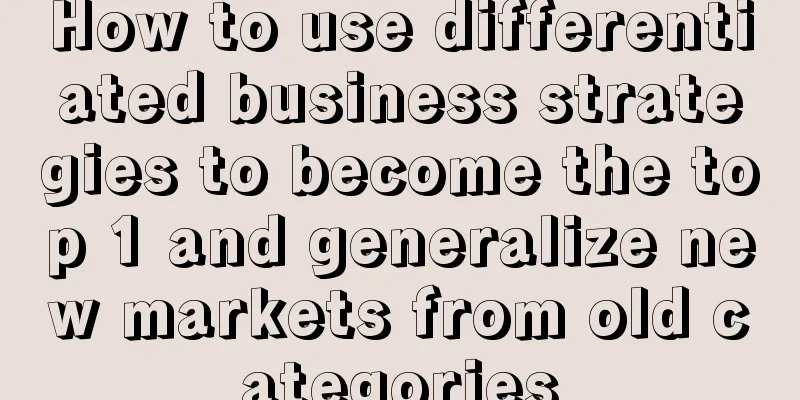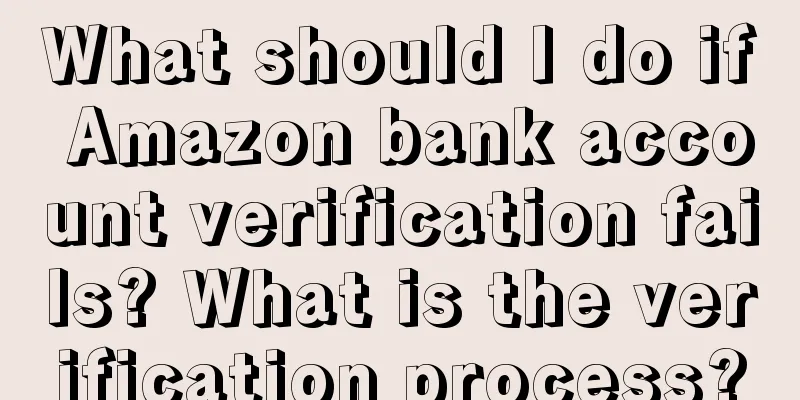How to "lie" correctly? 13 scientific and artistic methods and cases of "telling the truth" for brands
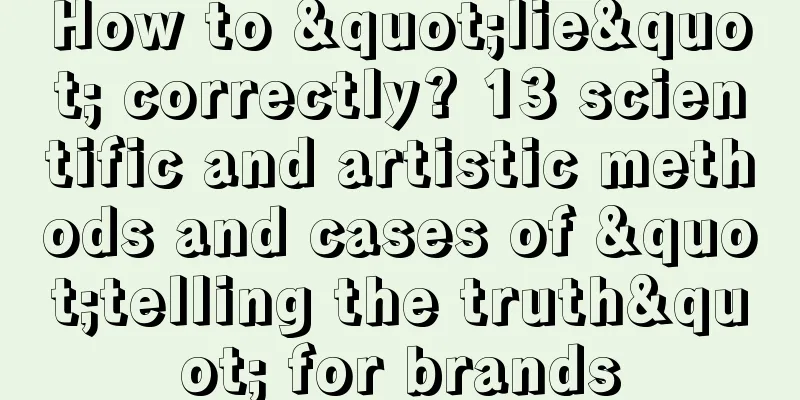
Hector McDonald, author of "Truth", proposed the theory of "competing truths" . He believes that competing truths are descriptions of a person, an event, an object or a policy in multiple ways , and these descriptions may be equally true. McDonald divides "competing truths" into four types: 1. Partial truth: The truth chosen by the communicator. The truth is a mirror that is scattered into countless pieces. Each piece is the complete truth, but also partial, just like a blind man touching an elephant. It is the result of your choice. 2. Subjective truth: a truth that can be changed. It refers to a truth that depends on one’s own value orientation and is true from the perspective of every person who expresses it. 3. Artificial truth: Truth created by people. It refers to truth that people use to suit their own purposes. Their names, definitions and values often change according to the wishes of the users. 4. Unknown truth: The truth that affects the future. The truth that describes the possibility of the future based on credible evidence. Although it is not completely certain, it is difficult to verify and has a certain degree of credibility. In other words, because of the different perspectives, the truth of the event you see is also different, but this is the truth of the event. Let’s look at it another way: there’s usually more than one true way of saying something , and we can use “competing truths” constructively to encourage people to take action. The above logic simply opens a "back door" for us brand people to "lie" - the scientific and artistic way of "telling the truth"! Of course, McDonald believes we also need three bottom lines and moral standards: It is factually correct. It is about achieving constructive results that enjoy public support. It does not cause the audience to behave in a way that would harm themselves.
Using "competitive truth" and combining McDonald's 13 methodologies, let's see how brand people can "tell the truth" elegantly. 01 There is more than one side to the truth.Logic and methods: Things are complex, and the description and emphasis on one aspect of things will lead to different understandings of us. Classic case: Blue Sky's Six Must-Haves: Good teeth, good appetite, a healthy body, and delicious food. (What does this have to do with it?) Yuanqi Forest: 0 sugar, 0 sucrose and low sugar. Picture from the Internet How to act? Consider many different sides of any important issue and seek out a variety of different viewpoints in a balanced manner. Choose facts that support your point of view without distorting the reality you are conveying. Make the issue clearer by omitting the truth, but be careful not to mislead your audience. Don’t become: Misleaders who drown important truths in a sea of irrelevant. Misleaders who attack people and projects simply by association. 02 History influences the future!
Basic logic: The influence of history on the construction of human consciousness is far beyond our imagination. All brand people should learn to tell the history and stories of founders, companies and brands . Classic example: Legends are not only created, but also told over and over again. Look at those stories and book lists. How to act? Shape the organization’s current identity based on relevant historical events and achievements. Recount successful actions and events from the past to encourage others to act now. Don’t become: A misleader who saves himself from embarrassment or weakens his opponent by ignoring relevant important history. Misleaders who promote violence, discrimination and racial conflict with a highly selective historical narrative. 03 Make good use of background.Logic and method: Background truth is often an implicit consensus that greatly affects our impression of reality. The same story will give people completely different impressions in different contexts. The background that brands emphasize or downplay is an important part of influencing reality. For example, "setting a framework" for the topic being discussed so that communication is limited to situations that are conducive to achieving the purpose; or selectively "ignoring relevant background" so that the conditions presented are conducive to the establishment of the point of view, are all uses of background truth. Classic case: De Beers: “A diamond is forever.” Advertisements that are scenario-based or endorsed by local people are more penetrating. Picture from the Internet How to act? Backgrounds should always be checked! Use the most useful context as a framework to support your argument. Change your attitude toward things, people, and problems by changing your context. Don’t become: Misinformers who share breaking news without understanding the full context. Deliberately omitting important context, especially when quoting others, is misleading. 04 Questioning the numbers!
Logic and methods: Our understanding of the world depends on how we measure it. Most people don’t know what a specific number means. For brand people, numbers can imply the meaning they want, thereby influencing reality. And because numbers themselves can be presented in a simple or complex way, they are easier for people to understand or trust. Picking different statistics can make numbers misleading by choosing favorable units , making numbers larger or smaller , hiding or exaggerating trends . Classic case: Colgate: "Over 80% of dentists recommend Colgate." OPPO: "Charge for 5 minutes and use for 2 hours." Xiangpiaopiao: "We sell 1 billion cups a year, and if the cups were connected together they could circle the earth three times." Picture from the Internet How to act? Dig deeper to understand what each number in the debate really means. Make sure you are using the most appropriate units and that the things you are comparing are on the same level. Place the figures in context and compare them to other related figures to show their true size. Don’t become: Misleaders who try to make numbers look bigger or smaller, or to make trends more obvious. A misrepresenter who believes that there is a causal relationship between two sets of related data. Misleading by cherry-picking statistics or not clearly stating what average they are using. 05. Tell a good storyLogic and methods: Why do stories influence the truth? The answer lies in the cause and effect of the story itself. Humans crave explanations. Because stories help us make sense of this messy world. They make complex things coherent and clear. Stories are powerful and easy to believe, but the problem with stories is that they are highly selective : what they tell and how they tell it. Simply by telling the stories in order, you can achieve the effect of suggesting causal relationships by connecting facts : "Tell beneficial stories about things that happened to you, and you can use stories to define your identity , or use case stories to encourage or change behavior , or even as evidence. " Although they are all one-sided, they are still easy to accept. Case: Airbnb’s original intention. In 2007, we hosted three guests—Michael, Kat, and Amol—and became the first hosts on Airbnb. Our guests arrived as strangers but left as friends. The connections we made that weekend made Joe and I realize, “Maybe there’s a bigger idea here!” Soon after, Nate joined, and we created a way for people around the world to become hosts, just like us. How to act? Use stories to clarify why or why something happened. Choose your stories about an organization carefully to help that organization shape you. Share anecdotes about best practices to encourage others to do the same. Don’t become: A misleader who fabricates causal relationships in a story composed of real events. A misinformer who uses specific stories to prove a general point. 06 Morality can also changeLogic and methods: Morality is a very tricky concept, and good and evil are not immutable. On issues where we have not yet formed fixed ideas, we can see the "truth" more clearly and there may be flexibility. Morality can also be affected by group pressure, which can influence group morality and force us to subconsciously submit to it; or it can cultivate new morality, allowing some behaviors to become habits, habits to become thoughts, and thoughts to be internalized into new moral truths and transformed into true morality. Classic case: Shanghai: "What kind of trash are you?" Alipay and its Ant Forest. Manner Coffee offers a 5 yuan discount for bringing your own cup. How to act? Recognize that morality is subjective and that destructive group morals can be changed. Instill new moral truths through empathy, motivation, logical argument, and a new definition of desirability. Don’t become: A misleader who demonizes morally neutral things and people. A group that supports a certain moral truth that is harmful to society. 07. Attraction = Emotional ValueLogic and methods: We may act based on our personal beliefs about good and evil, but most of us are motivated more by emotion - we are attracted to things that inspire pleasure, interest or excitement, and repel things that inspire hatred, fear or disgust. Different emotions motivate us in different ways, and their role far exceeds most other psychological drives. It can be seen that by changing people's wishes, we can change the world. Changing tastes is not easy, but it is possible. As long as we work hard, we can like things that are good for us. By persuading people to like things that are good for them , they will have the expectation of enjoying it and will be more likely to accept it; while making people hate some people or things will make them gradually oppose the existence of things. Classic case: MUJI. MUJI's grand strategy is to "make a difference" . And MUJI makes itself "make a difference" through 6 actions: ① Regenerate the injured earth ② Re-recognize the diversity of civilization ③ Re-evaluate the pursuit of comfort and convenience ④ Do not pursue the aesthetics of new and shiny objects ⑤ Re-build relationships ⑥ Eat, sleep, walk, and clean well. How to act? Learn to like things that are good for you – it’s possible! Help those around you do the same with names, purpose statements, and other competing truths. Don’t become: Demagogues and other misleaders who try to make you hate certain groups. 08. Leverage subjective valueLogic and methods: Prices are set, but value is subjective, and how we value things drives our economic behavior. Through market means or other psychological techniques, using the relative valuation anchoring strategy, he makes us subjectively strengthen its benefits to ourselves and the scarcity generated by price comparison, thereby promoting some irrational purchases. Classic case: Xiaomi’s “hunger marketing” and “ value for money ” that made it famous. Before announcing the price of Xiaomi 14 in 2023, Lei Jun first put the price of iPhone 15 Pro on the public screen. Lei Jun said : "I suggest that you take a look at iPhone 15 Pro first, you will be shocked at first sight." Then he announced the starting price of Xiaomi 14 at 3999 yuan. Picture from the Internet How to act? Find out what things are truly worth to you, and don't be swayed by the value others set for them. When valuing, consider risk, future expectations, and scarcity factors, as well as the benefits that could be realized by you and others. Don’t become: Misleaders who use price anchors and other psychological techniques to influence your valuation. Models, platforms, or environments that encourage you to undervalue your personal time and labor. 09 Definition of PlayfulnessLogic and methods: When powerful words are precisely defined, people tend to like to " explain the situation according to the definition ." In particular, some competing truths that are defined differently may describe almost the same situation, but they can lead to completely different results, so the choice of definitions may determine our outcome. Classic case: PX Supermarket: From cheapness and promotion to "PX Economic Aesthetics" and "PX Welfare Center. Picture from the Internet Redefine yourself: from Didi Taxi to Didi Travel; from Alipay to Alipay Life; How to act? Be forthright about definitions. If changing a definition will help clarify or advance the debate, do so. Move with the times and acknowledge that definitions change as everything else changes. Don’t become: A misleader who interprets situations differently in order to fit an important definition. A misleader who uses his own dubious definitions of common words. 10 Social construction (redefinition and refreshing of cognition)
Basic logic: The reality of some things in current civilization does not come from entities, but from our common recognition that they are products of human imagination and are therefore changeable. Creating or eliminating social constructs , selectively describing them , or even "redefining" them will change people's views and attitudes towards things. In turn, new things will shape a completely new human group. Examples: "Digital natives", "new middle class", "new retail", "new consumption", "new Chinese tea drinks"; "newly knowledgeable youth", "punk health", "emotional value"... Wu Sheng must be mentioned here. In this respect, he is second to none: "New Species", "Scene Era", "Art Gallery Era", "Digital Marketplace", "Small Interest Business", "Dialogue Era"... Picture from the Internet How to act? Acknowledge that social constructs are products of our imaginations and that we can change them when necessary. Define social constructs in ways that are helpful, as flexibility allows. If you have the necessary influence, you can modify social constructs by describing them differently. Don’t become: A misleader who makes highly distorted representations of important social constructs. Individuals, institutions, and governments that create harmful social constructs. 11 “Names” have power!Logic and methods: Names are not neutral, they have power and they evoke resonance. They can inspire action and wreak havoc. The name we give to a thing affects the way the world sees it. We can change other people's perceptions through names . If we lobby through inflammatory names , it will produce exaggerated propaganda effects; if we smear with negative nicknames, it will create bad associations due to entertaining insults and weaken its value. A new name is a new truth: if it leads to a whole new perception of reality, it can have a huge impact. Classic case: Coca-Cola, PepsiCola, Heineken, Tide, Reebok, Colgate, Lay's, Nike, Marriott and Marvel are all strokes of genius. Wahaha, Nongfu Spring, Toutiao, Pinduoduo, Hema... Luo Yonghao's various fancy names - "Stingy Man". (When it comes to storytelling, Lao Luo is the best) Picture from the Internet How to act? Choose the names of projects and people carefully – names can influence their prospects. If your product or concept isn’t going over well, try renaming it. Don’t become: Someone who uses inflammatory names to persuade you to buy, vote, or act inappropriately. An adversary who gives you or your project destructive nicknames. Misleaders who change the outcome by changing the wording of the debate. 12 Predictions that incorporate values.Logic and methods: Prediction is an important daily habit. We don’t know what the future holds, but by carefully considering competing truths about it, we can gain future survivability. Predictions are influenced by values, resulting in selective predictions that ignore other groups and things; by actively performing predictive behavior, one can either make something happen or prevent something from happening. Classic case: "Consumption downgrade", "substitution", "digital age", "downstream market"... From "poverty alleviation" and "four modernizations" to "common prosperity" and "a better life". How to act? Paint a positive and credible picture of the future to inspire action now. Consider a variety of competing forecasts to ensure you are prepared for any possible scenario. If someone makes a prediction that requires current action, we should question the validity of that prediction and consider what other predictions would require us to do. Don’t become: A misleader who persuades you to do something without omitting unpleasant related predictions. People who simply share and promote predictions that support their personal opinions. 13 Faith accomplishes everything!Logic and methods: Faith is not limited to worship and religion. It can also be a social construct (organization, the common destiny of the race), a shared ideology (such as the justice of natural human rights, nuclear deterrence). Our strongest beliefs drive our daily actions, and beliefs that seem illusory may prompt us to do things that other truths would not. These truths shape our world. Classic case: Apple, the company that “changed the world”. “We must clearly communicate what we want consumers to remember about us, and the most important key is the core value of the brand . A brand does not sell products and technology, nor does it compare you with your competitors. It sells core values, just like Nike sells shoes, but never mentions specifications and technology in its ads. It only promotes great athletes. Apple’s core value is that we believe that passionate people can change the world. This is our belief! We want to convey this message to the world! ” - Steve Jobs’ speech before the “Think Different” ad Picture from the Internet How to act? If you want to change the negative behaviors of those around you, you should discover and question the beliefs behind those behaviors. Identify and celebrate positive shared beliefs to strengthen groups and organizations. Don’t become: Brainwashers who isolate some people and control the competing truths they hear. A group that attempts to pressure people into submission and conversion. Misleaders who try to convince you of dangerous or extreme interpretations of the Holy Book.
The core content of this article is excerpted from: "Truth Post-Truth Era" Author: Brand Yuan, WeChat public account: Brand Yuan (ID: brand-yuan) |
<<: Year-end review | From these 10 stories, I talk about my cognitive gains this year
>>: Short video marketing enters an era of disorder
Recommend
What should I do if Shopee traffic is low? How can I improve it?
Today, I will introduce you to the content of open...
Is there any risk in changing the brand on Amazon? How to register the Amazon brand?
When opening a store on Amazon, you may need to ch...
Tea sellers are frantically diverting traffic to private domains
As the Spring Festival approaches, the amount of a...
From Southeast Asia to Japan and South Korea, Mixue Ice City's overseas expansion
Recently, many netizens posted photos of the grand...
How long will Tianshui Malatang remain popular?
I believe everyone has eaten Malatang. Recently, T...
A phenomenon: The faster you learn marketing, the more miserable your business will die.
The formula for new consumer brands in the past ha...
The universal formula for operations. Once you learn it, you can handle any performance target, no matter how big it is!
Performance goals can be achieved by improving the...
How do big companies conduct user research?
Now many large companies have leading technology a...
How many copywriters lose because of “smallness”?
A week ago on International Women's Day, major...
Old domestic brands are becoming popular again, and "Vigor 28" cannot rely solely on "overwhelming traffic"
This article discusses how the time-honored Chines...
How to log in to Shopee Seller Self-Service Center? How to use it?
Shopee Seller Service Portal (SSP) is an integrate...
The Dragon Boat Festival copy you want is here!
The Dragon Boat Festival is coming, and the author...
11.9 yuan for three cups, can Juewei Duck Neck’s milk tea sell well?
As the growth of the marinated food market slows d...
How to check the sales volume of Amazon store? What are the methods?
As an Amazon merchant, you must pay attention to y...
Why do customers still not buy even though you lowered the price?
Often, it is not just the price that determines wh...
